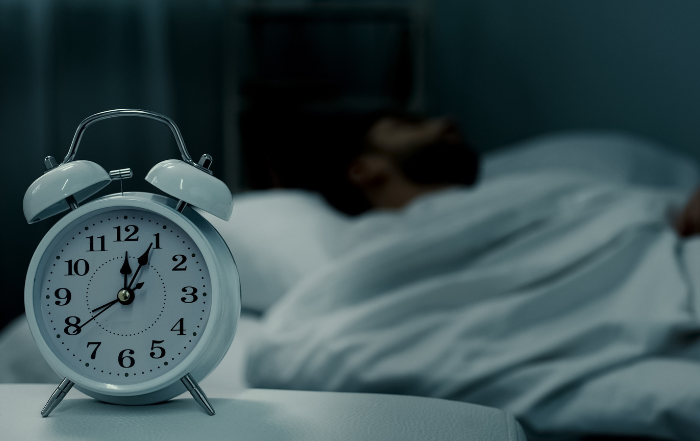The CPAP machine was invented in Australia in 1980 by Colin Sullivan, an Australian physician and professor. CPAP machines have always been close to my heart, because I was working as a patent attorney in Sydney, Australia in the 1990s, when CPAP machines were first being developed in Australia.
A CPAP machine produces continuous positive airway pressure (CPAP) to a patient via a face mask. This prevents collapse of the upper airway, and CPAP therapy is therefore highly effective for managing obstructive sleep apnea, among other conditions.
According to a report from the US Securities and Exchange Commission, more than 8 million CPAP interfaces are sold annually in the U.S., with another 2.5 million globally. There are also an estimated 80 million people with undiagnosed sleep apnea.
Peter Sullivan originally sought assistance from his university’s Business Liaison Office for obtaining patent protection of his invention. This request was apparently declined, and Sullivan then used his own resources to patent a “Device for treating snoring sickness” that was issued as Australian Patent AU 560,360.
Figure 1 of the original patent is shown below, and illustrates the fundamental concept of the CPAP machine. The patent states that, "the patient will have administered to the nasal passages air of slightly increased pressure sufficient to maintain the nasal passages open throughout the breathing cycle."

Sullivan's patent was purchased by an investor company, who agreed to pay royalties to the inventor for 5 years. However, as is so often the case with patented technology, the technology was to develop rapidly, leading to many further patents, including patents for predicting when a sleep apnea may occur, and adjusting the airway pressure accordingly.
A collaboration between Sullivan and Lynch led to a further patented invention, namely the delay timer patent (PCT/AU88/00, 8 Sep 1987) issuing as US patent 5,199,424 on 6 April 1993. This was achieved by providing an initial low pressure, to allow the patient to go to sleep, followed by gradually increasing the pressure to the required level, over a selectable time period.
A further patented invention used a microphone to detect when snoring occurred, and used this information to increase the air pressure only when needed to prevent an apnea from developing. This was based on the realisation that most apneas are preceded by snoring. The invention provided the patient with better sleep, and lower average delivered pressure during the night, thus increasing compliance with the therapy.
The development of new patents by others can sometimes lead to a situation in which the holder of the later patents cannot exploit the new technology without a licence from the owner of the original patent, while at the same time the owner of the original patent cannot exploit the new developments in the technology without a licence from the holder of the later patents. In such situations, the parties sometimes agree to grant each other licences under their patents (a so-called cross-licences), so that both parties may exploit the technology.
In 1989 ResMed was established in Australia to develop Colin Sullivan's invention of the CPAP machine. According to the publication Medtech Dive, ResMed is now the largest manufacturer of CPAP and bilevel positive airway pressure devices in the world by market share. ResMed relocated to San Diego, California in 1990, and is now a medical equipment company, which provides cloud-connectable medical devices for the treatment of sleep apnea (such as CPAP devices and masks), chronic obstructive pulmonary disease (COPD), and other respiratory conditions.
In 1993 a setback occurred when three judges of the Australian Federal Court revoked Sullivan's original Australian patent for a CPAP machine. ResMed then initiated an action alleging infringement of ResMed's three surviving patents. Fortunately, ResMed had not simply relied on the original patent, but had further patents which could be asserted against alleged infringers. This is an important lesson for all technology companies. It is important to continue patenting new technology as it arises, so that if any individual patent fails there are other patents which can be relied upon. Nobody can ever be 100% certain about the validity of any individual patent. The reason is simple. No patent search can ever provide absolute certainty that no relevant prior art exists. For this reason it is important to continue patenting new developments, so as to create a portfolio of patents that can be relied upon.
ResMed now employs more than 8,000 employees worldwide, operates in more than 140 countries worldwide, and has manufacturing facilities in Australia, Singapore, France, and the United States. ResMed's revenue was US$3.6 billion in fiscal year 2022.
According to consulting firm GreyB, ResMed has over 6,000 granted patents, with most patent applications being filed in the US, followed by Australia, Japan, New Zealand, China and Europe. The patents most frequently cited against ResMed's patent applications are those of competitors Philips, Fisher & Paykel Healthcare, Covidien, Loewenstein Medical Technology Sa, and Breathe Technologies Inc.
The story of how Colin Sullivan's invention of the CPAP machine in 1980 led to a multi-billion dollar industry is a remarkable story of success. Clearly patents have been central to this success story, starting with Colin Sullivan's original patent mentioned above, which he financed himself. Sullivan could surely never have imagined, when starting his patent journey in 1980, that his patent would lead to a company with over 6,000 granted patents.



